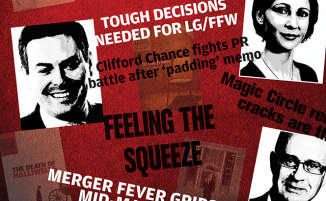Writing at the end of November, with this issue hitting desks only a day or two before the candidates for Allen & Overy (A&O)’s leadership elections are announced – this column is truly hostage to fortune. Who will emerge to lead what has for many been the Magic Circle’s most effectively-led player will have significance spreading well beyond A&O’s City HQ. Still, a good track record cannot be counted on swinging re-election for senior partner Wim Dejonghe, thanks to the firm’s marathon but unsuccessful merger attempt with O’Melveny & Myers. That deal had many supporters but also some entrenched opposition, not least a vocal group of City corporate partners. And even many who were sympathetic grew understandably uneasy at the length of time the deal dragged on. Consequently, this looks to be no rubber-stamping exercise for a second term, even if many believe Dejonghe will run again and stands a good chance of re-election. The open nature of the race was further underlined by the late-minute announcement from managing partner Andrew Ballheimer that he would not seek a second term.
Potential candidates are currently keeping their powder dry, but for months there has been talk that the popular and effective banking co-head Philip Bowden will stand as senior partner, representing a serious candidate with a huge constituency. Even a two-horse race is hard to call, but there has also been suggestion that infrastructure head David Lee could throw his hat in. And the managing partner role is expected to attract a wider field: projects head Gareth Price has been cited, another rock solid candidate, while litigation chief Karen Seward must be weighing her chances. Continue reading “If A&O’s new team can’t get a mandate, who can?”














